The hangman’s knot, or hangman’s noose, gets its name because we initially used it to execute prisoners. Today, we more commonly use the hangman’s knot while fishing and boating. It’s also a popular knot for Halloween decorations and securing animals or objects.
All hangman’s knots are nooses, but not all nooses are hangman’s knots. A hangman’s knot has six to thirteen turns, while a simple noose may only have one. These knots do not jam; you can loosen them without untying them.
What Is The Hangman’s Knot?
The hangman’s knot is an adjustable and non-jamming loop. A traditional hangman’s knot usually has 6-8 loops, up to 13. More loops mean more friction and difficulty tightening.
How To Tie A Hangman’s Knot (Noose)
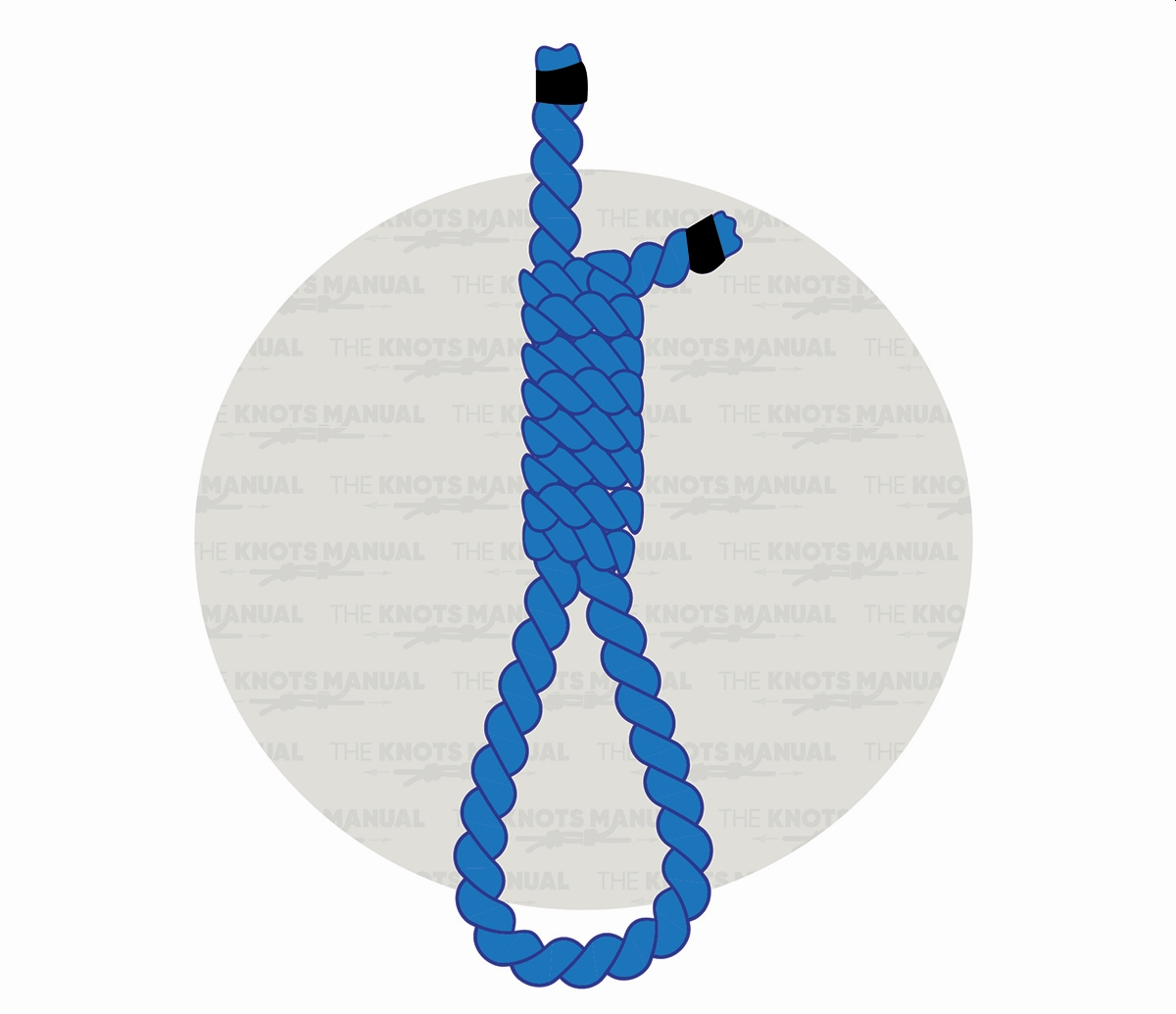
Follow these steps to tie a hangman’s knot(noose):
10 10 minutes
Step1:
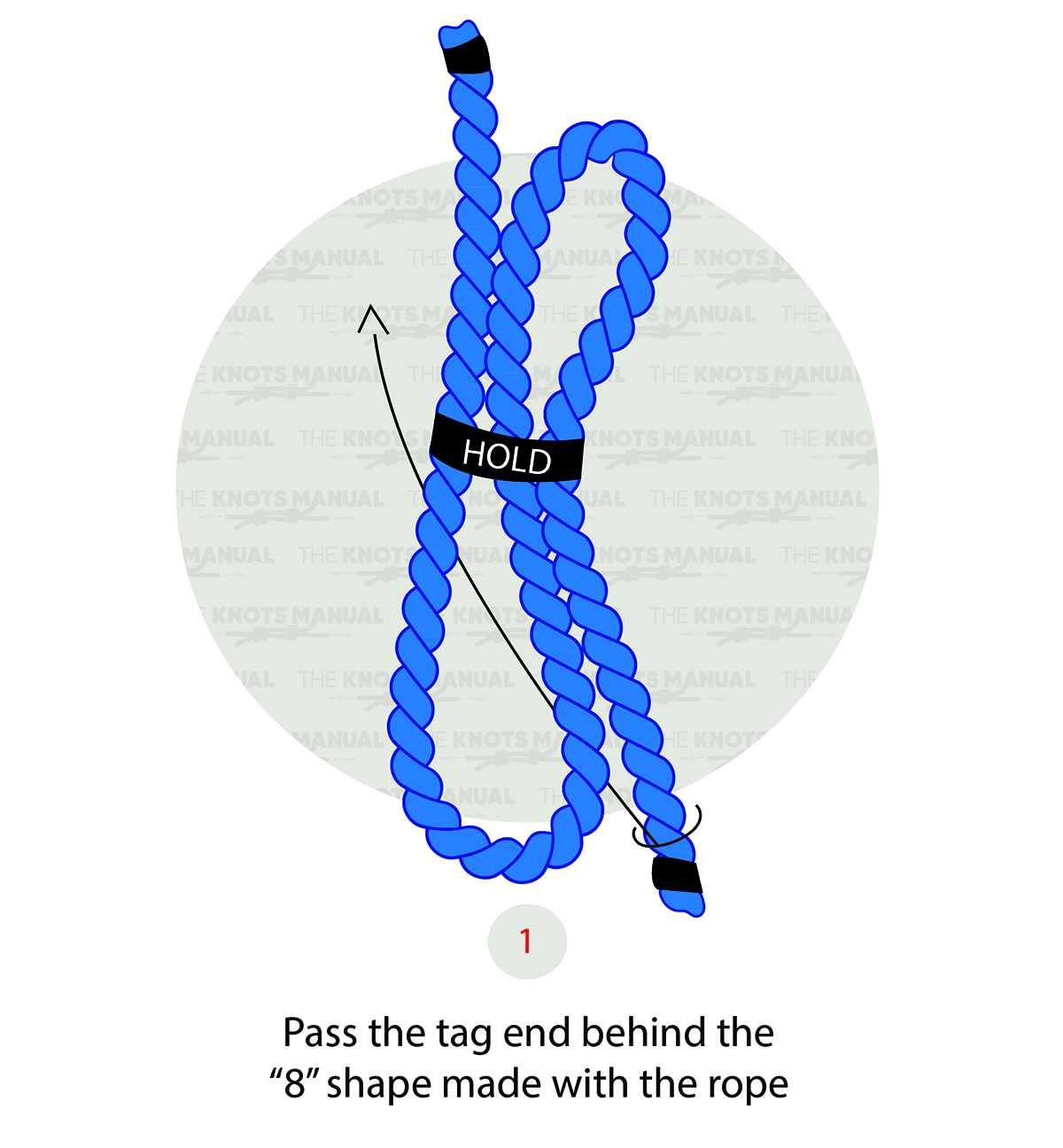
Start by creating two loops next to each other.
Step 2:
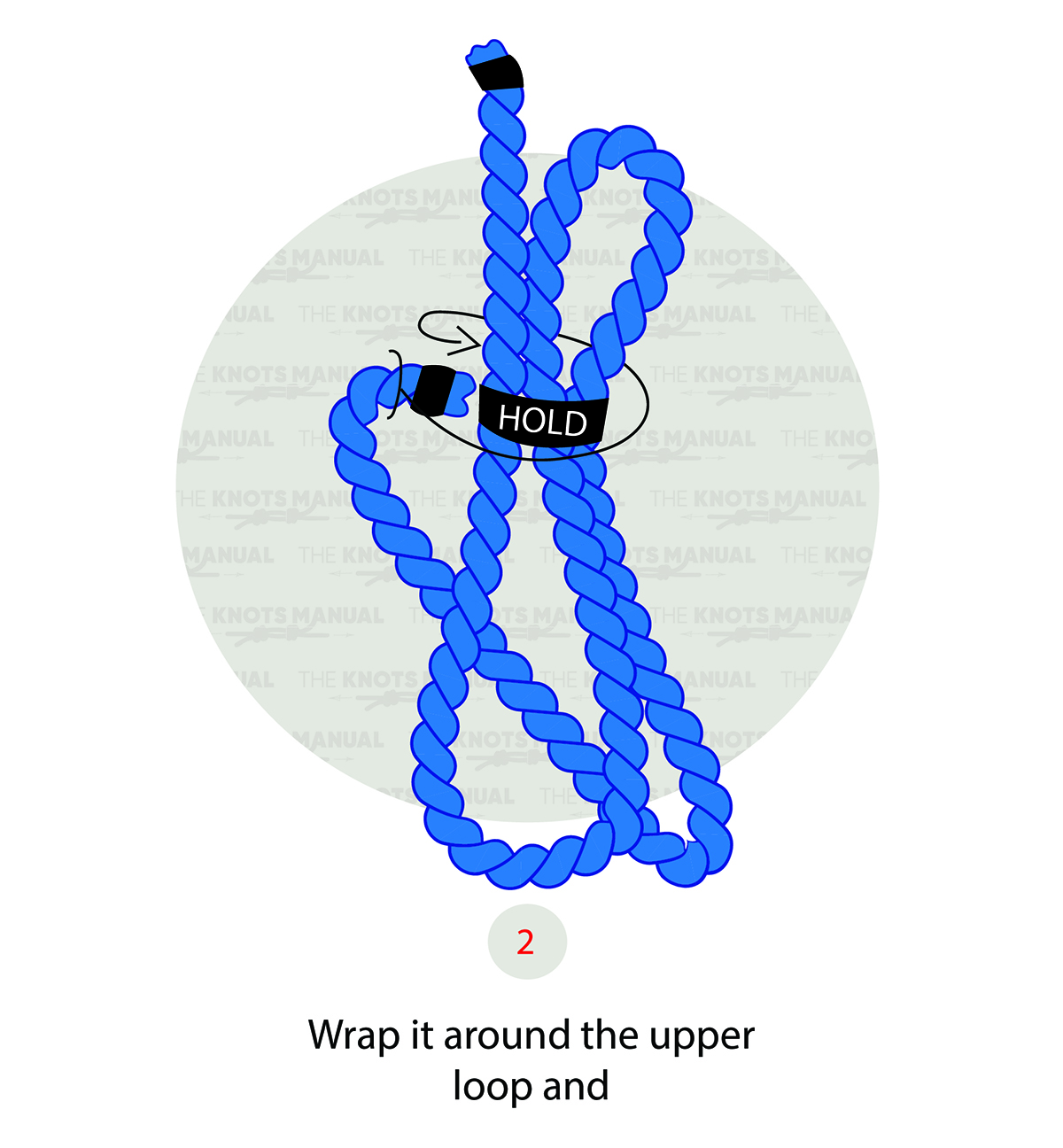
Pass the rope’s working end behind the figure “8” you created. Hold the center of the two loops together with your non-dominant hand.
Step 3:
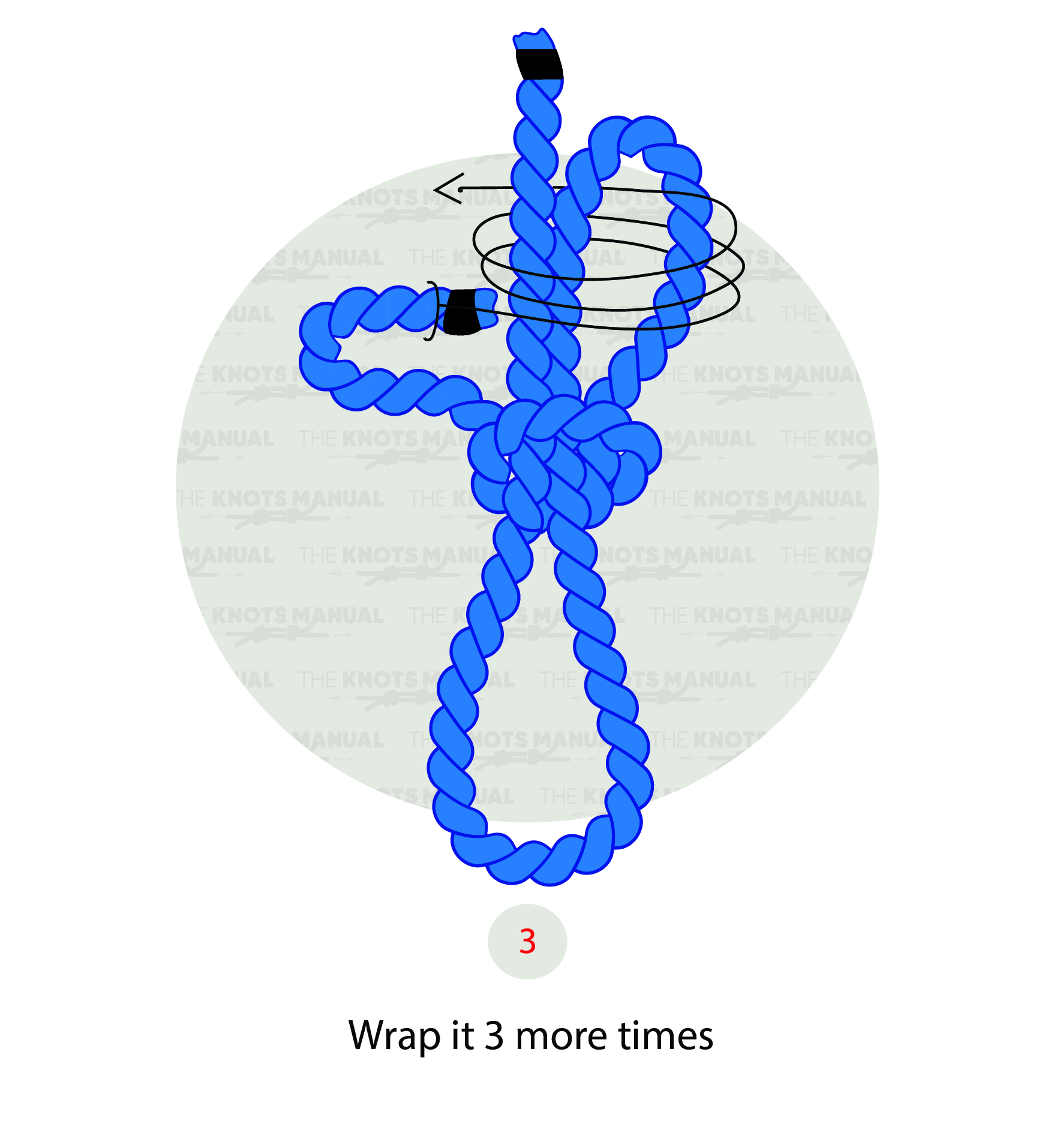
Wrap the working end around the upper loop and the standing end of the rope. Continue holding the center of the two loops together with your non-dominant hand.
Step 4:
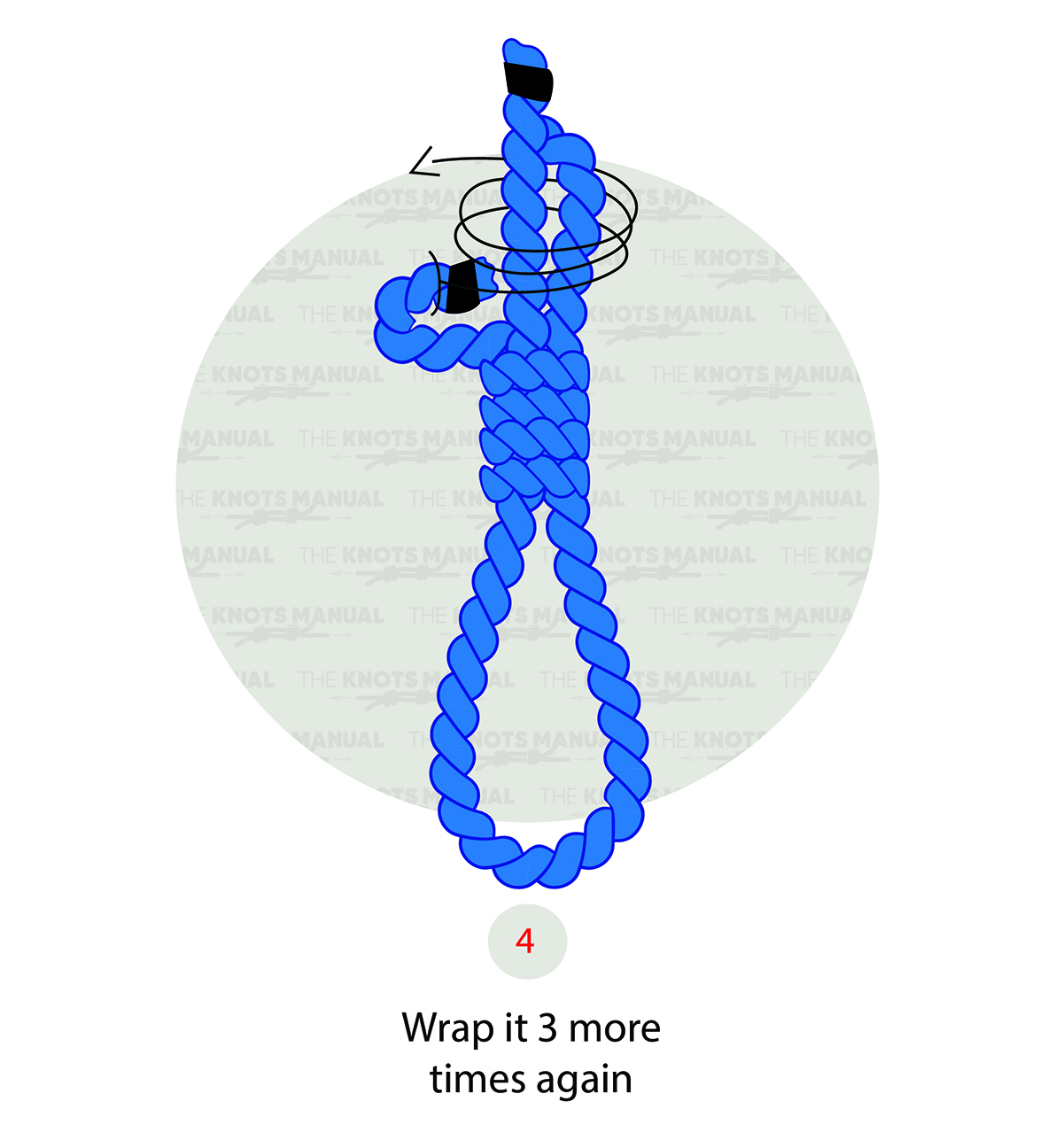
Pass the working end around the upper loop three more times. The loops should appear to stack on top of each other.
Step 5:
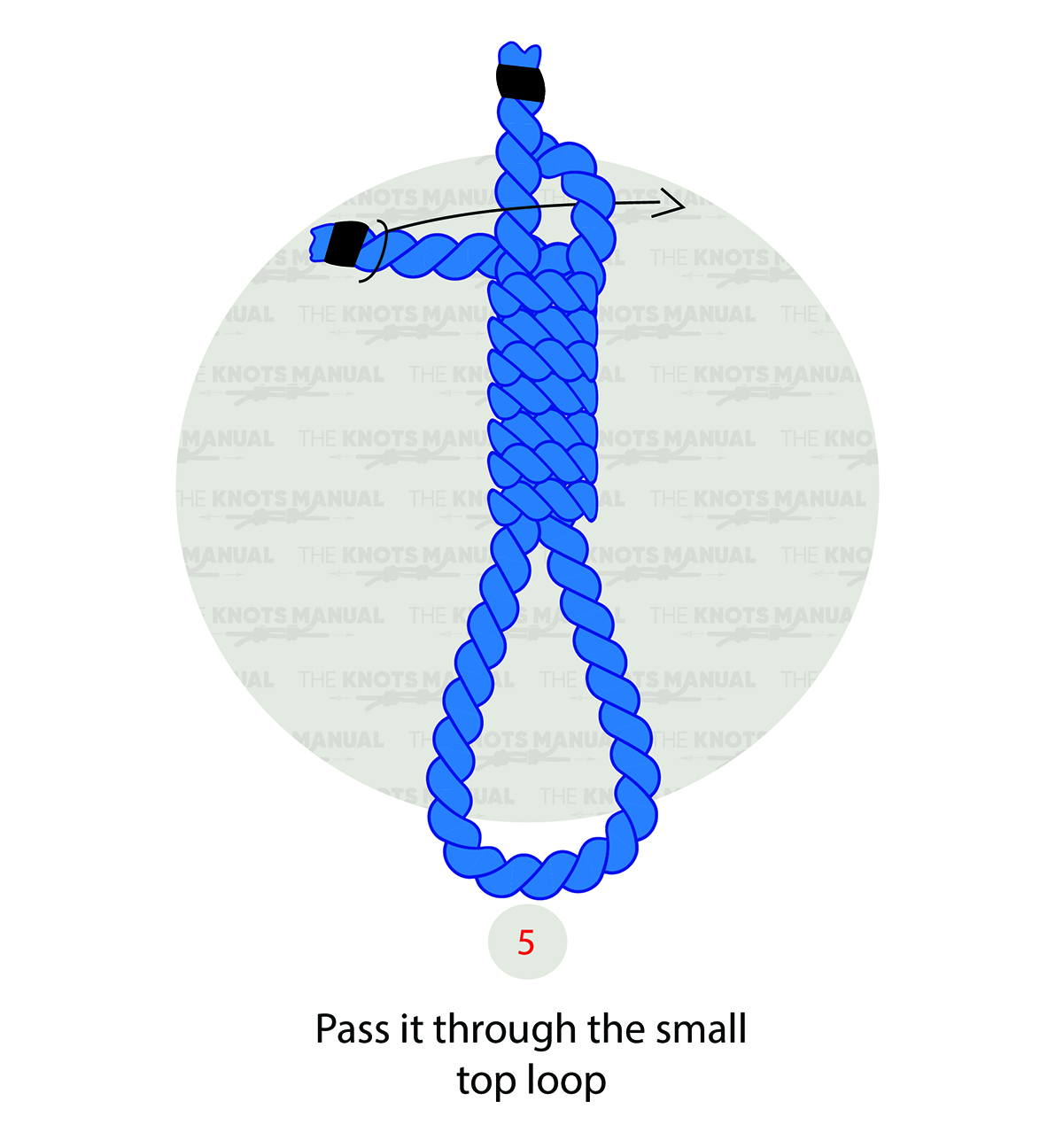
Wrap the working end around the upper loop three more times, continuing to stack them.
Step 6:
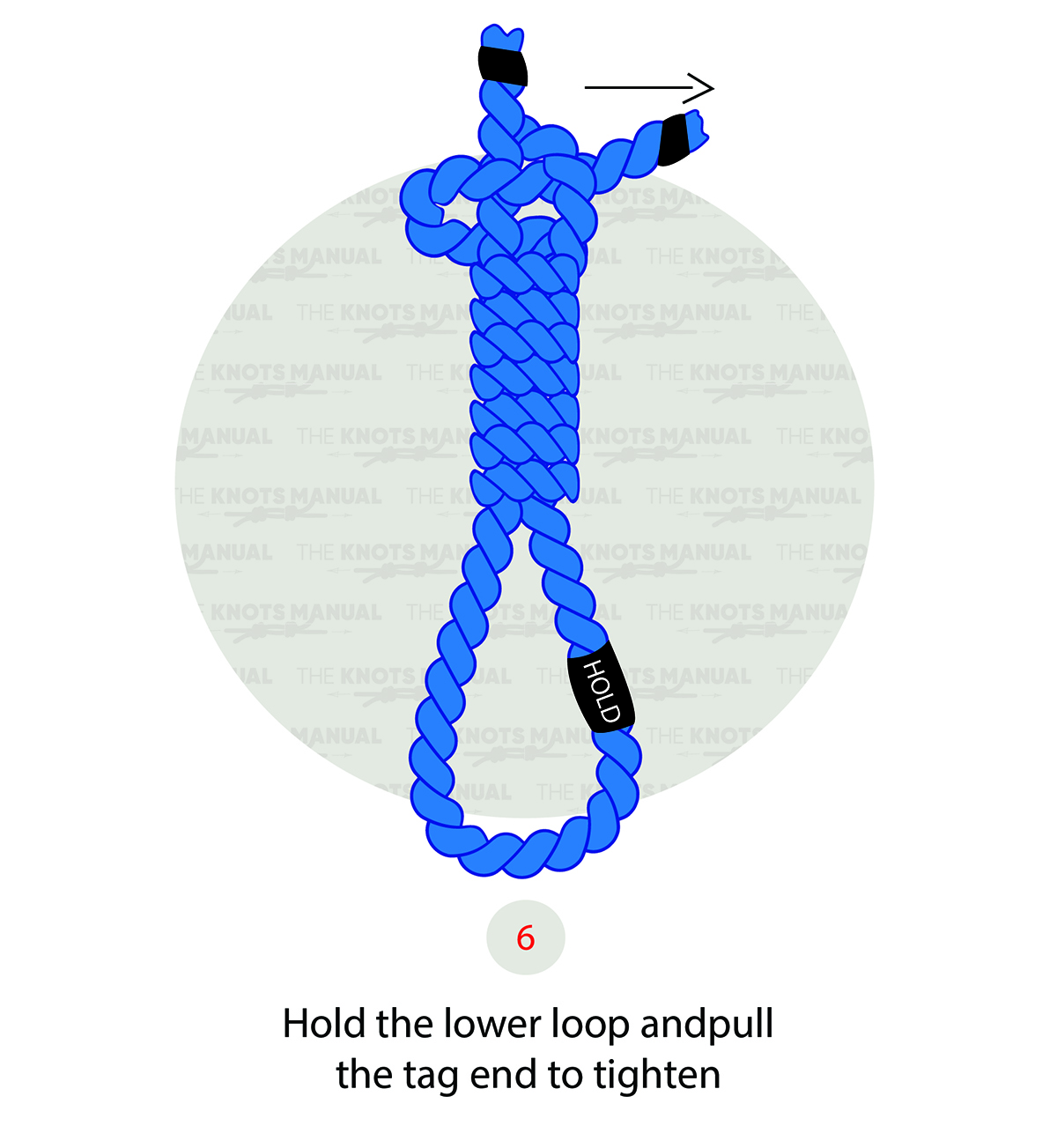
Pass the working end through the small upper loop.
Step 7:
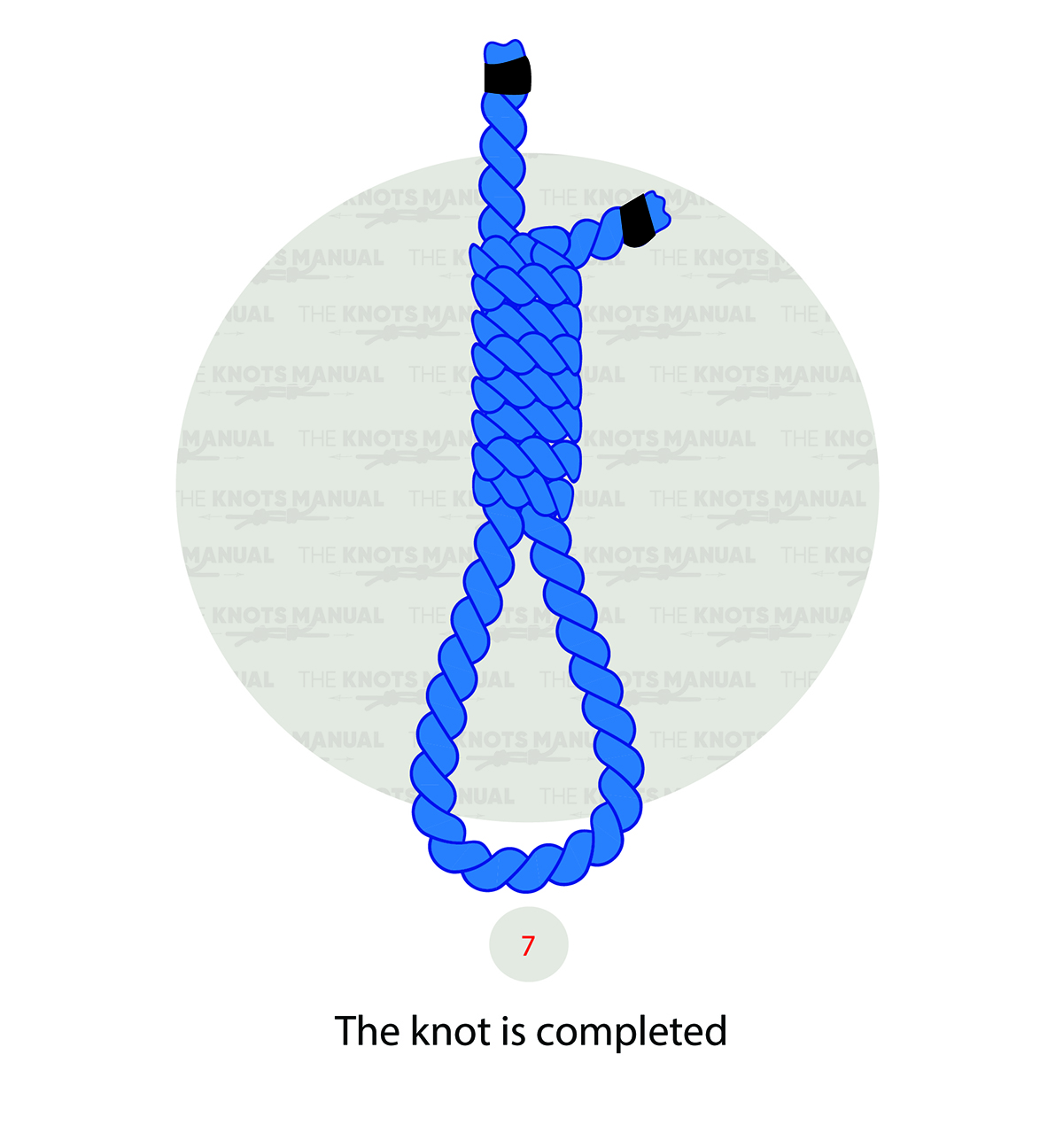
Hold the lower loop and pull upwards on the working end to tighten the knot.
Supply:
- Rope
Tools:
- Rope
*Disclaimer: The hangman’s knot is a dangerous tool and should not be used on any living being. Do not allow children to play around the knot as it is easily tightened, even when tied loosely.
If you are feeling suicidal, please access The National Suicide & Crisis Lifeline for guidance if you are in the United States. If you live elsewhere, click here to find crisis services in your country.*
Uses Of The Hangman’s Knot
In some parts of the world, the hangman’s knot is still used for execution. It is also common for fishing, boating, and Halloween decorations.
Execution
The most common and notable use of the hangman’s knot is for execution.
During a traditional execution, the knot was usually placed just below or behind the left ear. The person being executed stood on a platform that was abruptly ripped away, so the person was hung by the neck.
During traditional hanging, the bulk of the knot presses against the neck arteries. The pressure of the knot occluded, or closed, the arteries. Occlusion of the arteries causes the circulation of blood to the brain to stop.
Today, a more modern form of hanging causes more rapid death. Rather than placing the knot below or behind the left ear, it sits in front of the ear, just below the lower left jaw.
During the hanging, the knot tightens around the neck and jerks the jaw upwards to the right. The jerk of the neck and the rapid tightening of the rope causes the neck’s upper vertebrae to pull apart. Placing the knot in front of the ear results in a much faster death.
In more modern years, executioners discovered the effectiveness of greasing the rope. Doing so allows the knot to tighten rapidly when the platform drops and the person falls. Greasing was most often done with tallow.
Fishing & Boating
How To Use The Hangman’s Knot In Fishing & Boating:
- To attach fishing line to a reel
- As a tie-down for boats
- To attach two fishing lines
- To attach lures, hooks, or swivels to a leader or tippet
- Recovering objects that have fallen in the water
In fishing, the hangman’s knot can attach a hook, lure, or swivel to your fishing line.
Halloween Decorations
Decorations depicting executions are typical during the Halloween season. Halloween decorators often tie a noose around a skeleton and hang it from a gallows or tree. Such decorative depictions are often controversial but relatively common across the United States.
Other Uses
Some other uses of the hangman’s knot include:
- Tie-down for vehicles, tents, and other large items
- Animal snares
- Securing a rope to a post, pole, or animal
- Knitting
The History Of The Hangman’s Noose
The hangman’s noose likely originated in the United Kingdom (UK) and spread to other parts of the world. During the Elizabethan Era, the hangman’s knot was known as the “collar.”
The European noose was much different than the hangman’s knot we know today. Historic nooses from the United Kingdom show the knots as simple slipknots. In the 19th century, they altered the design a bit. They attached a metal eye splice to one end of the rope. Then, they formed the noose by passing the other end of the rope through the metal eye splice.
The hangman’s knot we think of today primarily came about in the United States. Early Americans designed the thick knot to crush the neck arteries.
The Dakota War Of 1862
One of the most notable hangings in American history occurred in 1862 during the Dakota war. 38 American Indians were simultaneously executed by hanging. The spectacle was the largest simultaneous execution in the country’s history.
Initially, 303 men received death sentences. The Dakota men were accused of participating in the war. Their trials were unfair. There was bias and little evidence. The proceedings were also conducted in a foreign language.
President Lincoln insisted on reviewing the cases further. 38 of those men were eventually executed on December 26. The men were found guilty of rape and the massacre of civilians.
Jack Shuler is the author of The Thirteenth Turn: A History of the Noose. He says the American Indians “did not go quietly.” As they stood, awaiting execution, they shouted their names. They did this so the onlookers would remember them. They also wanted their fellow people would know they were not alone.
Hanging In Modern United States History
Surprisingly, the hangman’s knot was still used fairly recently in the United States. The last hanging in the United States occurred in Deleware in 1996. The man executed was Billy Bailey, who was charged with double murder. A hanging has not happened in the United States since.
Hanging is still legal in New Hampshire and Washington state under certain circumstances.
The Symbol Of The Hangman’s Noose
The hangman’s noose is not just a knot used to execute criminals. It is also a powerful symbol of hatred and discrimination.
After the abolition of slavery, whites felt like they were losing power. So, the whites began using threats of violence to control the black population. Such threats were particularly prevalent in the southern United States. The symbol of the hangman’s noose became synonymous with these threats.
The KKK
The noose also became associated with the Klu Klux Klan (KKK). The KKK is a white supremacist and terrorist group primarily targeting African Americans. Sometimes, African Americans receive threats in the form of a drawing of a noose. More often than not, an actual noose would be left outside their home or workplace.
Jena High School, Louisiana
One of the most recent instances of the noose being used as a symbol of hatred occurred in Jena, Louisiana, in 2006. Jena High School is predominantly white. The black and white students rarely sit together. Usually, the black students would sit on the bleachers. Meanwhile, the white students would sit under a tree they coined the “white tree.”
On a day in the fall of 2006, a black student asked the principal if he could sit under the tree. The next day, nooses were hanging from the tree, and the act was tied to three white students.
Of course, the history of the noose and its ties to African Americans dates back much further than this.
The Lynching Of 1930
One notable example is the 1930 lynching in Marion, Indiana. A photo of the lynching inspired the controversial song and poem, Strange Fruit. Abel Meeropol first wrote the poem in 1937 and titled it Bitter Fruit. His wife later set the poem to music, and it was performed by Billie Holiday for the first time in 1939. The song grimly likened the victims’ bodies to fruit “hanging from the poplar trees.”
Three young black men were charged with murdering a young white man. As they awaited trial in jail, a mob of ten to fifteen thousand whites broke into the jail and abducted the three men.
Thomas Shipp was the first man attacked; he was beaten and hung from the bars of his jail cell. Then, they dragged Abram Smith down the street. First, the crowd stabbed him and broke his arms when he tried to remove the noose, and then they hung him. They later hung Shipp’s lifeless body next to Smith’s.
James Cameron, who was only 16, was abducted and beaten. The crowd planned to kill him, but someone from the crowd asserted his innocence, so they released him.
Hate Crime At The University Of Mississippi
One of the most recent instances occurred in 2016. Austin Edenfield and Graeme Harris are former students of the University of Mississipii. They tied a Confederate flag and noose around the neck of a statue of James Merideth. James Merideth was the first black student who attended the University. Both men were charged with a hate crime.
